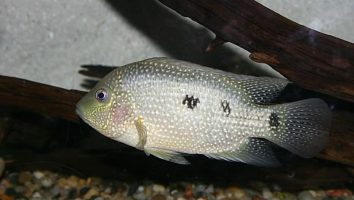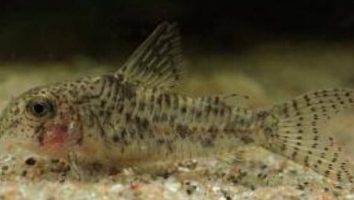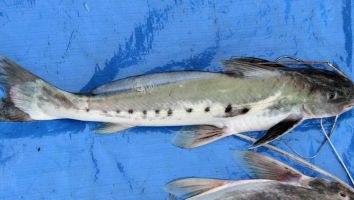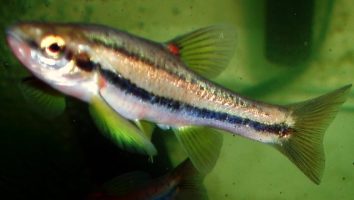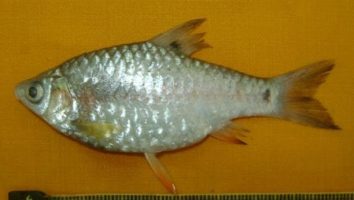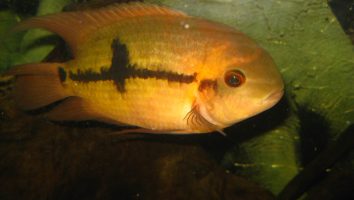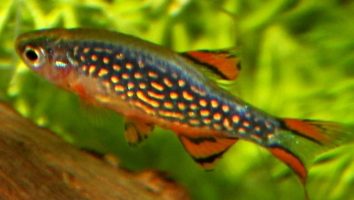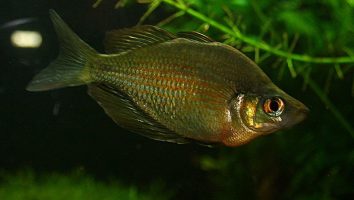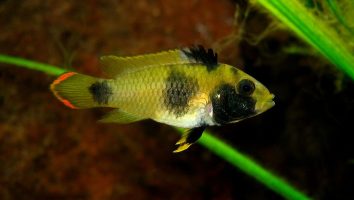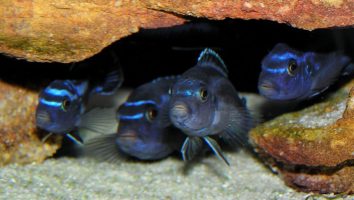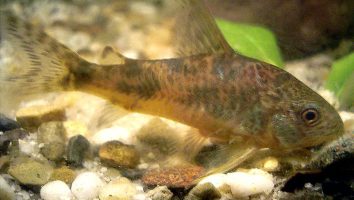Sailfin Catfish are an awesome freshwater fish that we recommend all the time.
This species is relatively easy to care for and can grow to be quite large, making them a great addition to any tank.
But there’s a lot of misinformation out there when it comes to this fish. We’ve read so many conflicting suggestions on care and tank mates over the years!
So we made this guide to set the record straight. In it, you’ll learn the correct Sailfin Catfish care guidelines (and tips on how to breed them).
Table of contents
Species overview
Sailfin Catfish (Pterygoplichthys multiradiatus) are a type of armored catfish that are native to South America. They are most commonly found in the Amazon River Basin, which covers a large area of Brazil, Peru, Colombia, and Bolivia.
They prefer slow-moving waters with a lot of vegetation, and they are often found near the shore in these habitats.
Sailfin Catfish are a popular choice for aquariums because they are relatively easy to care for and are very resilient. They are also known for being good algae eaters, which can be helpful in keeping a tank clean.
One thing to note about Sailfin Catfish is that they can grow to be quite large. They can reach lengths of up to three feet, so it’s important to make sure you have a tank that can accommodate them.
Appearance
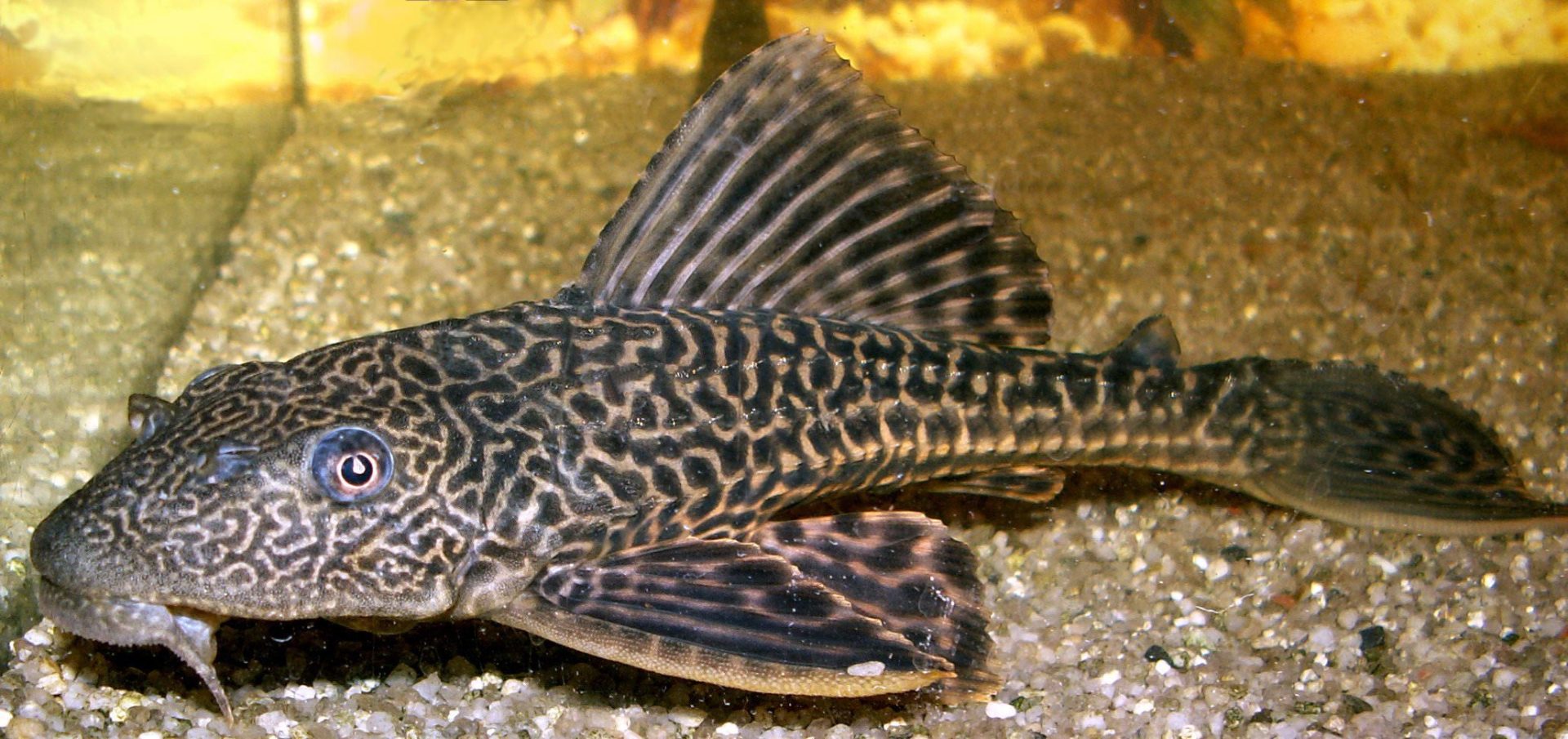
The first thing you’ll notice about this fish is their large and in charge dorsal fin. This sail-like fin is quite tall and can be colorful on some specimens. The dorsal fin starts about two-thirds of the way back on their body and runs all the way to their caudal peduncle.
The second most notable feature of this fish is their long barbels. They have four pairs of barbels in total (two maxillary and two mandibular). These barbels are used to help them find food as well as to communicate with other fish.
The body of the Sailfin catfish is long and thin. They have a relatively small head in comparison to the rest of their body. The mouth of this fish is located at the very bottom of their head and points downwards.
This species has a pair of adipose fins (one on each side) that are located behind their dorsal and anal fins. These fins are used to help them balance as well as to store fat.
Sailfin catfish have a forked caudal fin that’s taller than it is wide. This fin helps them make quick turns and navigate their environment with ease.
Lifespan
Sailfin catfish have a lifespan of around 5 years in captivity. This is actually quite short when compared to other freshwater fish.
There are a number of factors that can impact their lifespan. Poor water quality, for example, can be lethal to these fish. They’re also very sensitive to changes in their environment, so any sudden changes can cause stress which can lead to illness and an early death.
Size
Sailfin catfish are one of the larger species of freshwater aquarium fish. They can grow to be up to 24 inches in length, although most only grow to be about half that size. Sailfin catfish are a hardy fish that can live for up to 10 years with proper care.
Tank
Tank Size
The minimum tank size for a sailfin catfish is 100 gallons. This fish gets big, fast. If you’re looking for a smaller fish to add to your freshwater aquarium, you’ll want to keep looking.
The 100 gallon minimum tank size is for one fish. If you want to keep more than one sailfin catfish, you’ll need to add at least 50 gallons for each additional fish.
These fish are also active swimmers and will often be seen cruising around the tank looking for food. They need the extra space to move around and stay healthy.
Water Parameters
The sailfin catfish is a tropical fish that comes from slow moving rivers and streams in South America. In the wild, they’re found in areas with plenty of vegetation and hiding spots.
This is a relatively large fish when fully grown. They can reach lengths of up to two feet, making them one of the largest freshwater aquarium catfish.
With that in mind, they need a spacious tank with plenty of room to swim and hide. A minimum tank size of 75 gallons is recommended, but the bigger the better.
As for water parameters, the sailfin catfish prefers warm water with a slightly acidic pH. They’re also very sensitive to ammonia and nitrite, so be sure to keep these levels at 0 ppm.
- Water temperature: 72 to 82 degrees Fahrenheit
- pH levels: 6.0 to 7.5
- Water hardness: 2 to 20 dGH
- Alkalinity Levels: 4 to 8 dKH
What To Put In Their Tank
The first thing you need to do when setting up an aquarium for Sailfin Catfish is to choose the right size.
This species can grow quite large (up to two feet in length in some cases), so you need an appropriately sized tank. A 120-gallon aquarium is a good place to start, but you might need something even bigger depending on how many fish you want to keep.
Next, you need to pick the right substrate. These fish love to dig and are constantly sifting through the substrate in search of food. A sand substrate is ideal since it’s soft and won’t damage their barbels.
You also need to include some driftwood or rocks in their tank. These provide hiding places for your fish and also help break up the line of sight. This is especially important if you’re keeping multiple Sailfin Catfish since they can be a little territorial.
Plants are a bit of a tricky subject with this species. They will nibble on most plants, but there are some that are more resistant to their grazing. Java Fern, Hornwort, and Anubias are all good choices.
Common Diseases
The sailfin catfish is a pretty hardy fish, but that doesn’t mean they can’t get sick. There are a few diseases that these fish are particularly susceptible to.
The most common sailfin catfish disease is probably ich. This is a parasitic infection that will show itself as white spots on the body of your fish.
If left untreated, ich can be fatal. However, it’s relatively easy to treat if you catch it early. Simply raising the temperature of the water can often eradicate the parasites.
Another common disease is hole-in-the-head disease. This is caused by poor water quality and the presence of activated carbon in the tank.
It will present itself as one or two pits/holes in the skin of your fish’s head. While it’s almost always curable, it will usually leave some scarring on your poor fish!
The best way to prevent these diseases is to simply keep the tank in great shape. Not providing clean, high-quality water conditions will significantly increase the chance of your fish getting sick.
Behavior & Temperament
Sailfin Catfish are relatively peaceful fish, but they can be a bit nippy. They’re known to nip at the fins of other fish and will sometimes steal food from their tank mates.
Other than that, they’re not too aggressive. They’re mostly bottom-dwellers, but they will swim up to the surface of the water from time to time. When they’re not resting, they’re usually scavenging for food.
These fish are social creatures and do best in groups. They’re relatively active, so it’s best to keep them in a tank that’s at least 50 gallons. That way, they have enough room to swim around and explore.
Tank Mates
There are many different species of sailfin catfish, but most of them come from Central and South America. As a result, they do best in warm water.
This is important to consider when choosing tank mates because not all fish can tolerate warm water conditions.
Sailfin catfish are also peaceful fish that prefer to live in groups. For this reason, it’s best to choose tank mates that are also peaceful and can tolerate similar water conditions.
Some compatible sailfin catfish tank mates include:
- Guppies
- Platies
- Mollies
- Swordtails
- Neon Tetras
- Corydoras Catfish
- Otocinclus Catfish
- Bristlenose Plecos
Breeding
Sailfin Catfish are one of the easier species of fish to breed in captivity. They’re also one of the most rewarding, as they’re very active parents.
The first step is to set up a breeding tank. It should hold at least 50 gallons of water. Then, add a sandy bottom and some live plants. The plants are important, as the fry will hide in them when they’re first born.
Next, you need to adjust the water temperature. Aim for 77 degrees Fahrenheit. Then, add a few pieces of driftwood to the tank. The driftwood will help to lower the pH of the water, which is important for this species.
When everything is set up, it’s time to add the fish. Start with one male and two females. The male will be the largest fish in the tank. He’ll also have longer fins.
Once the fish are acclimated, you can begin feeding them. Feed them a diet of live foods and high-quality dry foods.
After a few weeks, you should start to see the female getting larger. That’s a sign that she’s ready to spawn.
When she’s ready, the female will lay her eggs on the plants or driftwood. The male will then fertilize them.
Once the eggs are fertilized, the male will guard them until they hatch. This usually takes about a week.
When the fry hatch, they’ll be very small. They’ll need to be fed live foods for the first few weeks. After that, you can start to introduce them to dry foods.
Conclusion
Sailfin Catfish are one of our all-time favorite freshwater fish. They’re absolutely gorgeous, easy to care for, and make a great addition to any community tank.
We do want to reiterate that they do get large, so make sure you have the proper size tank for them before you bring them home. Other than that, we think they’re an excellent choice for any fish keeper.
Thanks for reading and we hope you enjoyed this guide on Sailfin Catfish care!

